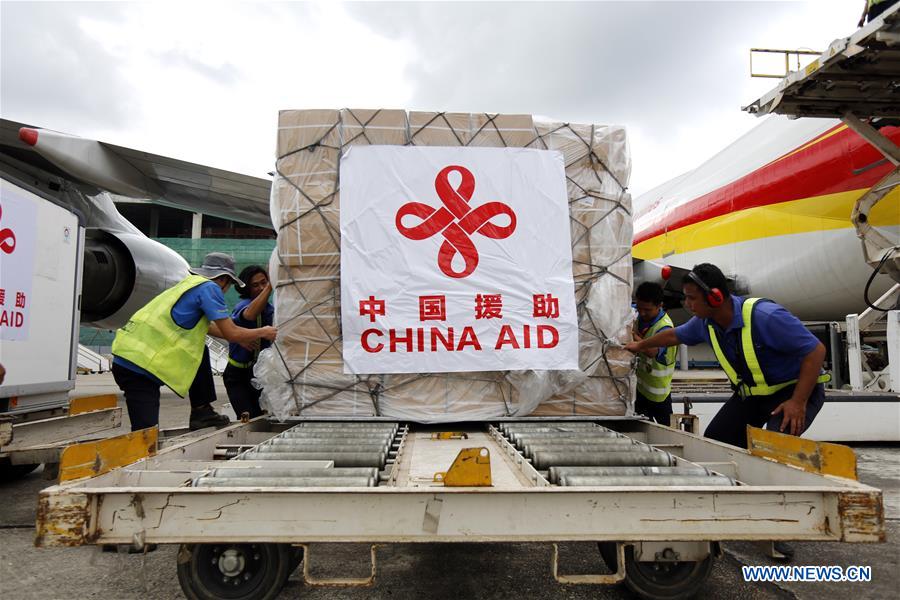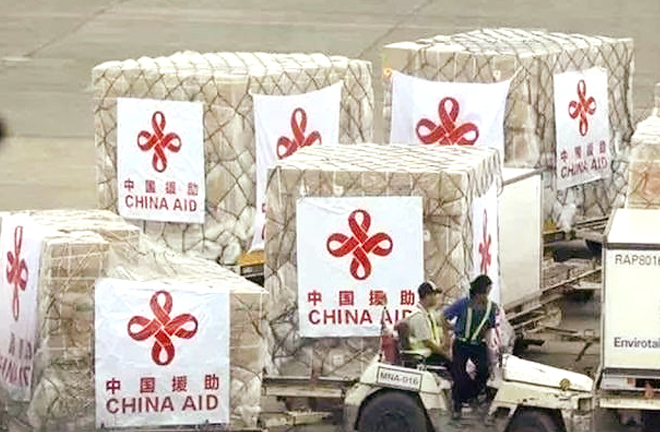Author: Zeng Lu, Julia Sun
What is the difference between the new version of the "Foreign Aid Management Measures" and the 2014 version of the "Foreign Aid Management Measures (Trial)", and what trends in China's foreign aid are reflected?
Total words2555About7minutes
The new version of the "Foreign Aid Management Measures" reflects three major changes
The "Foreign Aid Management Measures" (hereinafter referred to as the "New Measures") jointly issued by the China International Development Cooperation Agency (hereinafter referred to as the International Development Cooperation Agency), the Ministry of Foreign Affairs, and the Ministry of Commerce will come into force on October 1, 2021. The Ministry of Commerce's 2014 The "Foreign Aid Management Measures (Trial)" issued in 2019 will be abolished at the same time. Compared with the "Foreign Aid Management Measures (Trial)" released in 2014, the changes in the "New Measures" are mainly reflected in three aspects.
1. The "New Measures" is the top-level design for reforming foreign aid within the framework of major-country diplomacy with Chinese characteristics in the new era.The "New Measures" is based on China's idea of building a community with a shared future for mankind, the joint construction of the "Belt and Road" initiative, and the correct concept of justice and interests, truth, affinity and sincerity, and other diplomatic concepts. Pay attention to foreign aid concepts such as practical results, strengthen the strategic planning of foreign aid, and clearly divide the division of labor and management mechanisms related to foreign aid. According to the "New Measures", the International Cooperation Agency is responsible for formulating foreign aid guidelines and policies, promoting the reform of foreign aid methods, managing aid funds and annual budgets and final accounts, project approval, supervision and evaluation, and international exchanges and cooperation. Foreign aid implementation departments such as the Ministry of Commerce are responsible for the specific implementation of foreign aid, responsible for project organization and management, selecting project implementation subjects or dispatching foreign aid personnel, and managing foreign aid funds of their own departments. The Ministry of Foreign Affairs is responsible for making relevant suggestions according to the needs of diplomatic work. The embassies and consulates (corps) stationed abroad coordinate and manage the foreign aid work in the host country (international organization), and are responsible for communicating with aid recipients, accepting project proposals and conducting policy review, as well as overseas supervision and management of project implementation. In addition, the International Cooperation Agency is also responsible for establishing an inter-ministerial coordination mechanism for foreign aid, and coordinates major issues of foreign aid.
2. The "New Measures" improve the strategic planning and management of foreign aid, and strengthen the monitoring and evaluation mechanism.
In the stage of foreign aid policy planning, the "New Measures" propose that foreign aid strategic guidelines and medium- and long-term policy planning should be formulated. In the project management stage, the "New Measures" propose that the needs of aid recipients should be submitted through the embassies and consulates (corps) stationed abroad, and reported to the Ministry of Foreign Affairs and the International Cooperation Agency after review. The "New Measures" attaches great importance to the actual situation in foreign aid, and proposes that foreign aid projects that involve major adjustments can be adjusted according to procedures, and foreign aid executive departments can also submit project suggestions to the International Cooperation Agency according to work needs. In terms of foreign aid methods, the "New Measures" for the first time include foreign aid medical teams, humanitarian aid, and South-South cooperation assistance funds into the types of foreign aid projects, echoing this year's "China's International Development Cooperation in the New Era" white paper, and will The main body of implementing foreign aid has expanded from China and recipient countries to international organizations, non-governmental organizations and think tanks. In terms of supervision and evaluation, the "New Measures" adds a separate chapter on supervision and evaluation, and proposes to establish an evaluation system, formulate evaluation standards, and organize evaluations.
3. The "New Measures" strengthen foreign aid reform and system construction.
The "New Measures" propose that the International Cooperation Agency promote the reform of foreign aid methods, take the lead in promoting the legalization of foreign aid, and formulate corresponding foreign aid management systems with foreign aid implementation departments according to the division of responsibilities. Compared with the "Foreign Aid Management Measures (Trial)" issued in 2014, the "New Measures" strengthened the full-caliber information statistics system for foreign aid projects, and stipulated that foreign aid executive departments, embassies and consulates (groups) stationed abroad, and provincial-level people Relevant government departments report the implementation of foreign aid projects to the International Cooperation Agency, and establish a foreign aid statistics system.

The New Measures Highlight Four Trends in China's Foreign Aid
China has become an important force in promoting the sustainable development agenda of the United Nations, and the reform of foreign aid has been continuously promoted in recent years. China is the world's largest South-South aid provider and the seventh largest international development donor. From 2013 to 2018, China's foreign aid increased by more than 40% annually, reaching 45 billion yuan. In recent years, China's foreign aid reform has made continuous progress. The establishment of the International Cooperation Agency in 2018 is a major breakthrough in promoting the overall layout of the country's diplomacy and the top-level design of reform, development and cooperation. After the establishment of the International Cooperation Agency, it revised the "Foreign Aid Management Measures" and publicly solicited opinions to promote the reform of the management mechanism. The release of the "New Measures" shows that the Chinese government is actively seeking to improve the quality and management level of foreign aid, and reflects the four trends of China's foreign aid.
1. Foreign aid plays a more important role in major-country diplomacy with Chinese characteristics.In recent years, the international environment has become increasingly complex. China has shifted from a foreign policy of keeping a low profile to a more active major-country diplomacy with Chinese characteristics in order to seek to build a new type of international relations. The "New Measures" takes the important ideas, initiatives, and concepts of major-country diplomacy with Chinese characteristics as the framework, highlighting that the strategic planning of foreign aid is getting closer to the overall diplomatic strategy. The concept of foreign aid put forward in the "New Measures" emphasizes the actual effect of foreign aid that is more in line with the needs of recipient countries, which is conducive to the consolidation and development of friendly and cooperative relations with recipient countries through foreign aid, and promotes the role of foreign aid in major-country diplomacy with Chinese characteristics. more important role.
2. The foreign aid management mechanism pays more attention to efficiency and overall quality.The "New Measures" combine the responsibilities and characteristics of each department, clarify the overall coordination of the International Cooperation Agency, and the Ministry of Foreign Affairs, the Ministry of Commerce and other ministries and commissions participate in the implementation and suggestions, aiming to break down cross-departmental barriers and fully mobilize the enthusiasm of various departments to improve management efficiency and service. on the overall goal. In addition, the "New Measures" disperse the foreign aid policy, budget and final accounts, supervision and evaluation functions, the management and supervision functions of overseas work, as well as the implementation of foreign aid, and the management functions of aid funds and personnel to the Office of International Cooperation and the Ministry of Foreign Affairs. Executive ministries and commissions such as the Ministry of Commerce and the Ministry of Commerce help to form an effective check and balance and supervision mechanism among different departments and improve the overall quality of foreign aid.
3. Foreign aid planning and project implementation methods are more perfect and standardized.The "New Measures" proposes to formulate a strategic policy for foreign aid, and upgrade the original country-specific aid guidance to a country-specific foreign aid policy. The "New Measures" expand the subject of foreign aid implementation, increase the flexibility and diversification of foreign aid projects, and reflect the Chinese government's more confident and open mind. The "New Measures" attaches great importance to the needs of aid recipients, and fully considers changes in the situation in foreign aid projects. The newly added supervision and evaluation chapters in the "New Measures" may become an institutional guarantee for improving the quality of aid. The various designs reflect the unprecedented emphasis that management places on improving the quality and long-term effectiveness of development cooperation. In addition, the "New Measures" fully pay attention to procedures in the process of foreign aid policy planning, project approval, implementation management, supervision and evaluation, reflecting that foreign aid will be further standardized and will help improve the long-term effect of foreign aid.
4. Steady progress was made in foreign aid reform and legalization.China's foreign aid has formed a large-scale and extensive international influence, and it is urgent to further reform and improve the system construction to regulate and promote the sustainable and healthy development of foreign aid. The promulgation of the "New Measures" is an important step towards improving the legal framework for foreign aid, and it also lays an important foundation for the continued issuance of institutional documents regulating foreign aid, and the continuous promotion of the rule of law in foreign aid to support the sustainable and healthy development of foreign aid. In addition, the "New Measures" propose to carry out foreign aid research and improve the full-caliber information collection, reporting, and statistical mechanisms to provide high-quality decision-making basis for scientific decision-making and reform of foreign aid. Information collection, reporting, and statistical mechanisms are the prerequisite for grasping the overall situation of foreign aid, an important basis for high-quality decision-making, and an objective and comprehensive basis for the release of development cooperation white papers and international exchanges in the future.
All rights reserved, please indicate the source when citing.
References
http://www.cidca.gov.cn/2021-08/31/c_1211351312.htm
http://www.cidca.gov.cn/2021-08/31/c_1211351316.htm
Past review
- Three White Papers Reveal Trends in China's Development Cooperation
- New Trends in U.S. Development Cooperation Revealed by the 2022 Budget Proposal
- Seven Principles Likely to Influence Germany's Post-Election Development Cooperation Policies
- COVID-19 Likely to Reshape the Multilateral Governance System
- Assessing the Quality of Official Development Assistance: Insights from the 2021 QuODA Report

